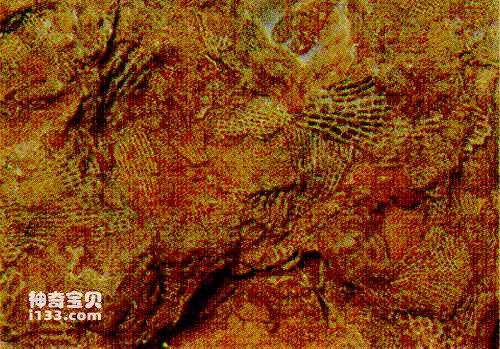Bryos and mosses in plants are two different things! They are a type of primitive aquatic group animals with tiny individuals. However, their body structure is more evolved than that of worms, with three germ layers and a true body cavity, and their bodies are not segmented. They are called "bryozoans" or "bryozoans" simply because their group morphology resembles bryophytes in appearance. At the same time, because they always live in groups, they are also called "group insects".

Bryozoans
Most bryozoans live in the ocean, and only a few species live in freshwater. Scientists divide them into three classes: Stenorrhea, Nudelipida, and Lamiaceae. Among them, the Class Stenochlamydia includes 4 orders: Cyclostome, Phostomata), Metastomata, and Cryptostomata, the Class Gnostomata has only two orders Ctenostomata and Lamiostome, and the Class Chemistryae is just a group that lives entirely in fresh water. A very small group of species.
Bryozoa in the ocean can adapt to a wide range of temperatures and depths. Modern bryozoans are distributed from the intertidal zone of coastal areas to the deep sea of 5,500 meters, and can survive from warm oceans to cold polar waters. This shows how adaptable bryozoans are. However, most bryozoans still thrive in warm shallow seas with normal salinity and relatively clean water, generally in the water depth range of 25 meters to 60 meters. However, bryozoans are not animals that swim freely in these water bodies. They are animals that are fixed on the bottom or attached to other objects. They can adapt to a variety of different seabed properties, and often grow on the hard shells of brachiopods and molluscs, and some can even grow on seaweed.
The earliest bryozoan fossils were found in the early Ordovician strata. Among bryozoans, Ctenostomata are a relatively primitive group. They have continued since the Ordovician to modern times, but have evolved little and have not many fossils. As the first prosperous period of bryozoans, the Ordovician also saw the appearance of bryozoans of the order Metastomata, the orders Ascostomata, the orders Cryptostomata, the orders Cyclostome, and the orders Ctenostomia. The Devonian to the Carboniferous was the second prosperous period of bryozoans. Each of the above orders still existed, but Cryptostomata appeared to be particularly prosperous. The order Aminostomata, the order Aminostomata, and the order Cryptostomata had begun to become extinct by the end of the Permian, and only some relics continued into the Triassic. The third prosperous period of bryozoans was from the Jurassic to the Cretaceous. At this time, cyclostomes flourished in large numbers and became the dominant bryozoans. Lamiostomes began to appear and developed in large numbers. The fourth prosperous period of bryozoans was the Cenozoic Era until modern times. During this period, the Lamiostomata were extremely developed and their prosperity exceeded the Cyclostomes, becoming the order with the richest biodiversity and the most advanced development among bryozoans. Dominate the modern ocean.
animal tags: Bryozoans
We created this article in conjunction with AI technology, then made sure it was fact-checked and edited by a Animals Top editor.